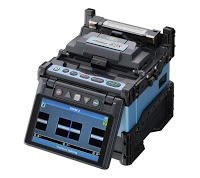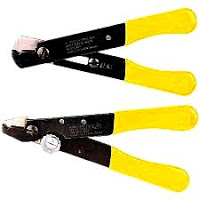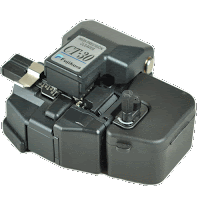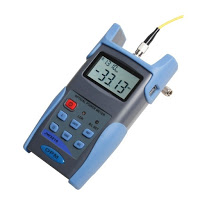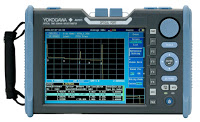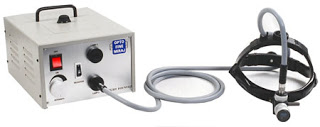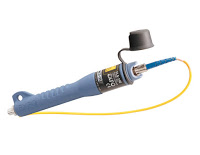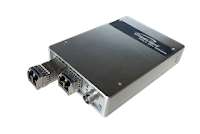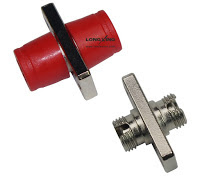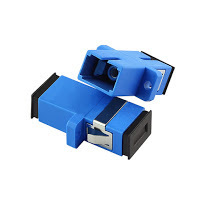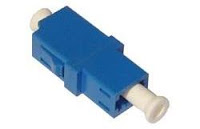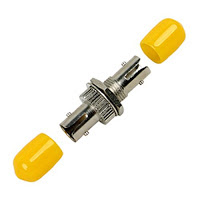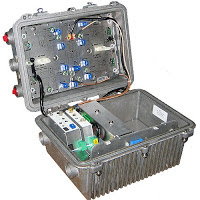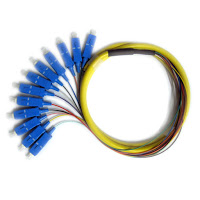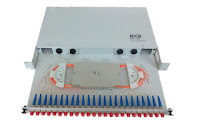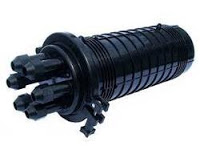SEKILAS TENTANG ALAT UKUR FIBER OPTIC
1. Fusion Splicer
Fusion splicer or often known as a tool for connecting optical fiber is one of the tools used to connect an optical fiber core, where the fiber is made / based on glass, and implements an electrical power that has been converted into a laser-shaped light medium.
2. Stripper Atau Miller
Just like other cables, one of which is coaxial and UTP cables, fiber optic cables also require this tool. This tool serves as a medium for cutting and peeling the skin and cable meat.
3. Cleaver
This Cleaver Tool has a function to cut cores where the optical cable skin has been peeled off, you also need to know that cutting cores is mandatory using this special tool, because the glass fibers will be cut neatly. If this process is carried out successfully, then the next stage, you can proceed to the Jointing stage
4. Optical Power Meter (OPM)
This one tool has a function to find out how strong the power of the incoming light signal is, this OPM also has an FC interface that is directly related to the FC pathcore. For those of you who don't know the formula used to carry out this process, here is the formula (TX – RX =…dB divided by the distance (Km)
5. Optical Time Domain Reflectometer (RTDR)
OTDR is a tool that is used to detect a community or set of optical fiber cables within a certain distance, so with this tool it is expected to be able to produce the distance from two sides which is a measure of the disturbance that occurs. So that troubleshooting can be done well, because it will be very easy to determine the location of the disturbance that is happening. This OTDR tool itself is usually used to detect Cracked Cables, Broken cores that are not yet known to be located, Broken cables or also to do bending
6. Light Source
Basically, this one tool has the function of providing a signal for the path it will go through, for example to measure a path attenuation or end to end where this Light Source will function as the medium that gives the signal.
7. Optical Fiber Identifier
This one tool has a function to find out the direction of the signal with a direction pointer and the amount of power that is going through it.
8. Visual Fault Locator
This tool is often called a fiber optic laser or fiber optic flashlight. Its function is to test the fiber optic core. The laser will follow the optical fiber on the optical fiber cable from POP to the user (end to end), if there is no problem with the core, the laser will arrive at the destination point.
9. Bit Error Rate Test
This tool functions as a TDM (Time Division Multiplex) network connection checker where the TDM network application is the Clear Channel service which the author is trying to describe. Specifically, the BER TEST is to check and find out which TX or RX errors, by sending packets and loops
10. Fiber Optic Adapter
Fiber Optic Adapter is a component used to connect/connect fiber optic cables to one another. if the connection is made to a fiber optic cable that has a different connector, the fiber optic adapter is called a hybrid fiber optic adapter or Special Adapter.
FC Fiber optiC Adapter
This type of fiber optic adapter is available in single mode and multimode types. There are three types of fiber optic FC adapters, square type, single and double type D, all fiber optic FC adapters with metal housing and sleeves. ) of ceramics.
SC Adapter Fiber Optik
This type of fiber optic adapter is available in single mode and multimode, as well as Simplex and duplex types. SC fiber optic adapter with plastic housing, has several color variants, such as : 1. blue for PC single mode 2. green for APC single mode and multimode beige for PC. All Fiber Optic SC adapters have a flange type, while for single mode adapters are with zirconia sleeves and for multimode fiber adapters are with bronze sleeves.
LC Fiber Optik Adapter
LC fiber optic adapter all plastic housing; there are simplex LC adapters and LC duplex adapters, the fiber optic LC adapters are the same color as the fiber optic SC adapters: blue for single mode PC, beige for multi mode PC and green for single mode APC. LC fiber optic adapter with bronze sleeve for multimode and zirconia sleeve for single mode.
ST Fiber Optic Adapter
Optical Fiber ST adapters of all thread types, with metal housing, single mode ones with zirconia sleeves and multimode ones with bronze sleeves.
11. Splitter Optic
The splitter is a passive component and can separate the optical power from one fiber input to two or several fiber outputs. The splitter at PON is said to be passive because optimization is not carried out on the power used by customers who are at different distances from the splitter node, so it is idle and how it works divides the optical power equally
12. Fiber Node
Fiber node is a point of termination between optical networks and coaxial networks. Fiber node e is an opto-electronic device that functions to convert optical signals originating from the distribution hub into electrical signals to be forwarded to the customer's house via coaxial cable and vice versa. Fiber node itself is one of the devices related to HFC (Hybrid Fiber Coaxial) technology and is widely applied to Cable TV network systems.
13. Pigtail Fiber Optic
A fiber optic pigtail is a piece of cable that only has one connector at the end, the pigtail will be connected to a fiber cable that does not yet have a connector. Usually the pigtail cable is installed on the OTB (Optical Distribution Box) and spliced by pulling a long Optic cable (Loose tube cable / Tight buffered cable).
14. Optical Termination Box (OTB)
Optical Termination Box, functions as fiber distribution such as FDF which accommodates a maximum of 72 cores. Optical Terminal Box is also used to connect indoor and outdoor fiber optic cable and patchcord. OTB can be mounted on a wall or pole.
15. Joint Closure Optic
Joint Closure is a box or place to put the results of the fiber optic connection. For example: If a fiber optic cable breaks due to being cut or burned, then the cable is spliced and the splicing results are placed in the Closure. The Closure Capacity varies from 6 core closure, 12 core closure, 24 core closure, 48 core closure to 256 core closure.

